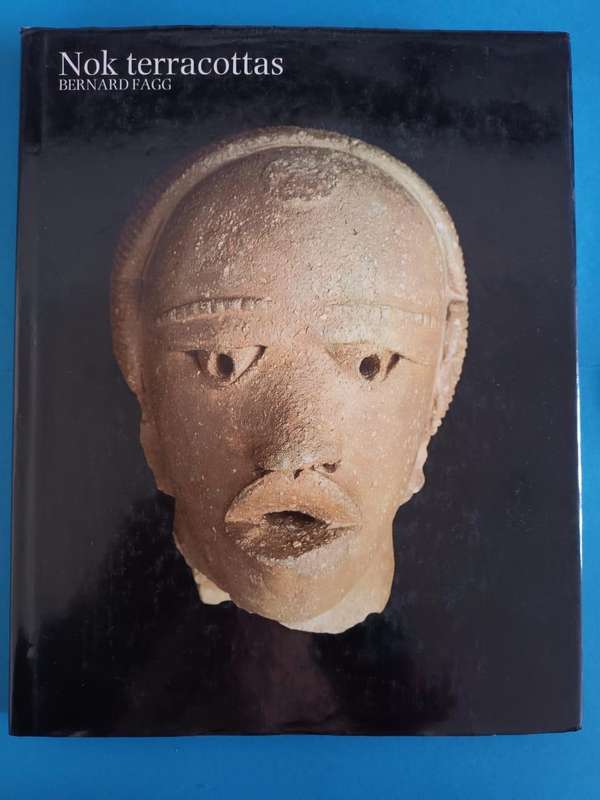
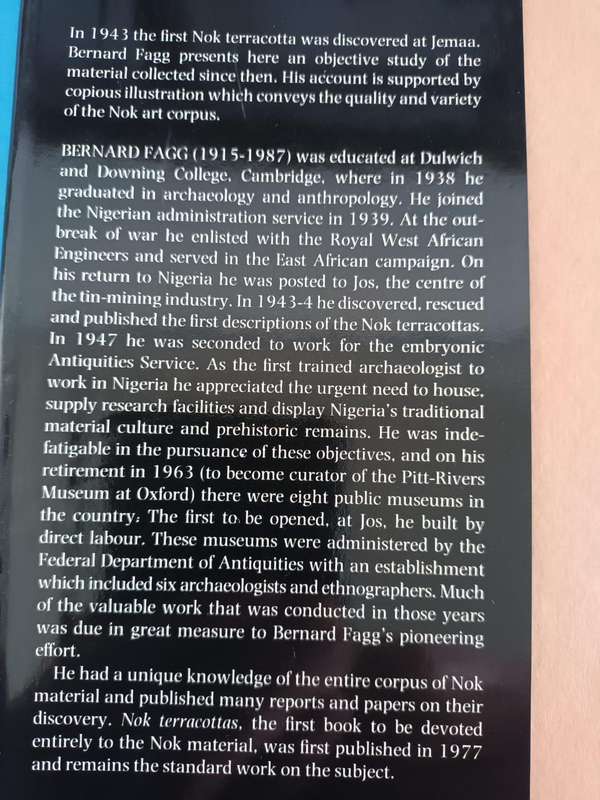


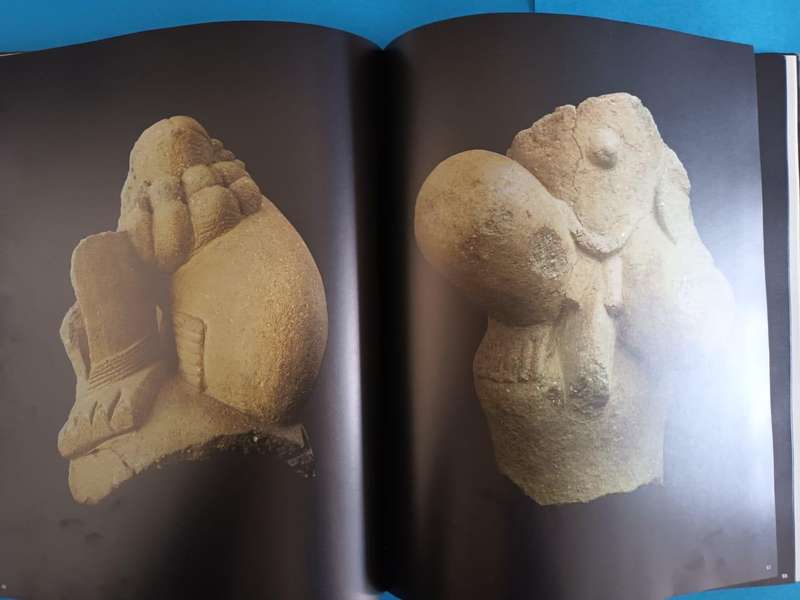

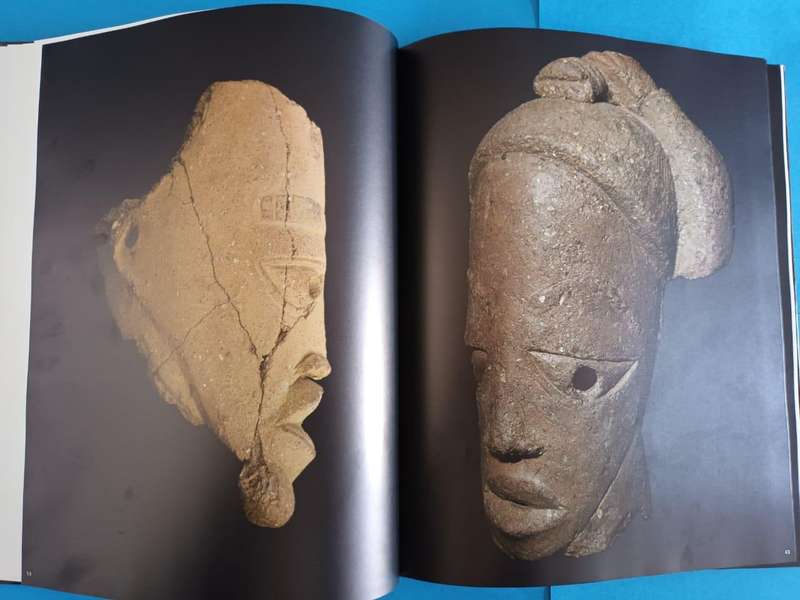



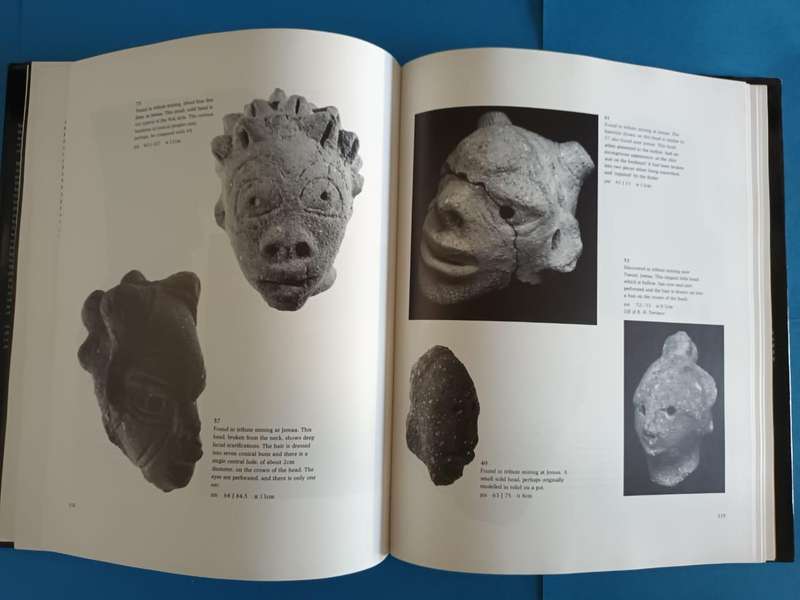


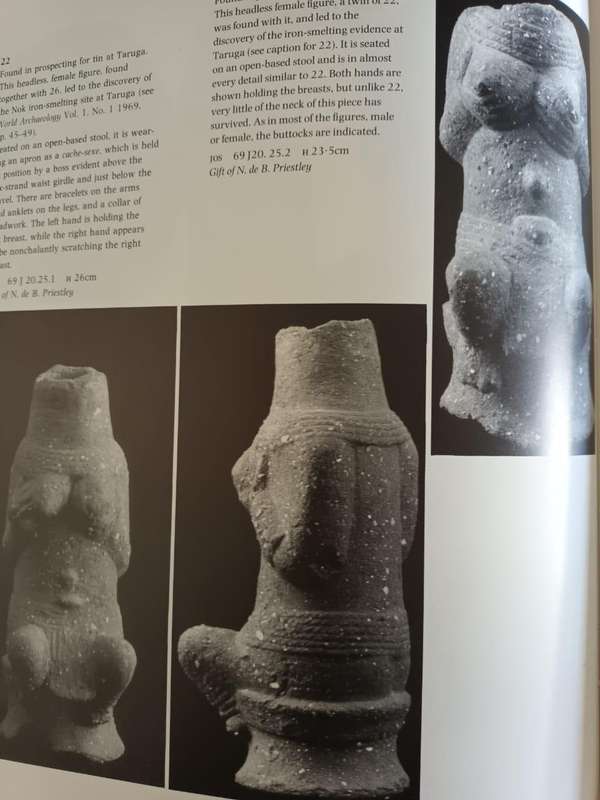
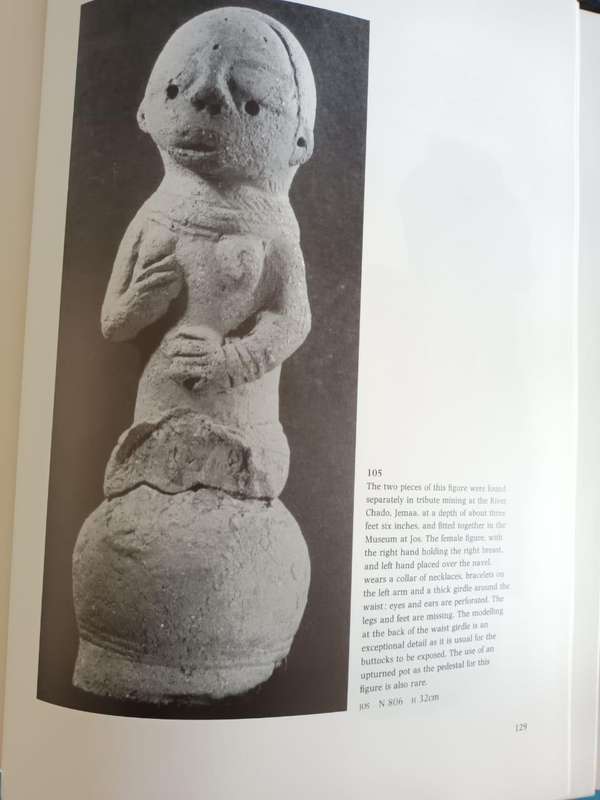





Nok Terracottas (Nigeria) Ancient African civilization
Check my rate
| Main centres: | 1-3 business days |
| Regional areas: | 3-4 business days |
| Remote areas: | 3-5 business days |




















| Main centres: | 1-3 business days |
| Regional areas: | 3-4 business days |
| Remote areas: | 3-5 business days |
Bernard Fagg, Nok Terracottas. London: Ethnographica, 1990.
Hard cover, quarto (30.5 x 24.5 cm), dustwrapper, 157 pages, illustrations, plates in the pagination, folding map.
'The Nok culture is a population whose material remains are named after the Ham village of Nok in southern Kaduna State of Nigeria, where their terracotta sculptures were first discovered in 1928. The Nok people and the Gajiganna people may have migrated from the Central Sahara, along with pearl millet and pottery, and diverged prior to arriving in the northern region of modern-day Nigeria. This may have led to their respective settlements in the regions of Gajiganna and Nok. Nok people may have also migrated from the West African Sahel to the region of Nok. Nok culture may have emerged in 1500 BCE and continued to persist until 1 BCE.' (Wikipedia)
In 1943 the first Nok terracotta was discovered at Jemaa. Bernard Fagg presents here an objective study of the material collected since then. His account is supported by copious illustration which conveys the quality and variety of the Nok art corpus.
Bernard Fagg (19151987) was educated at Dulwich and Downing College Cambridge, where in 1938 he graduated in archaeology and anthropology. He joined the Nigerian administration service in 1939. At the outbreak of war, he enlisted with the Royal West African Engineers and served in the East African campaign. On his return to Nigeria he was posted to Jos, the centre of the tin-mining industry. In 19434 he discovered, rescued and published the first descriptions of the Nok terracottas. In 1947 he was seconded to work for the embryonic Antiquities Service. As the first trained archaeologist to work in Nigeria he appreciated the urgent need to house, supply research facilities and display Nigeria's traditional material culture and prehistoric remains. He was indefatigable in the pursuance of these objectives, and on his retirement in 1963 (to become curator of the Pitt-Rivers Museum at Oxford) there were eight public museums in the country. The first to be opened, at Jos, he built by direct labour. These museums were administered by the Federal Department of Antiquities with an establishment which included six archaeologists and ethnographers. Much of the valuable work that was conducted in those years was due in great measure to Bernard Faggs pioneering effort.
He had a unique knowledge of the entire corpus of Nok material and published many reports and papers on their discovery. Nok terracottas, the first book to be devoted entirely to the Nok material was first published in 1977 and remains the standard work on the subject.